Disclaimer: This reviews racist content and imagery for the purpose of historical and informational context. I ask that you speak up and let me know in the case I say something that is harmful, ignorant, or perpetuating, so that I can take the appropriate accountability and correct myself. Thank you.
Release Date: April 27th, 1940
Series: Merrie Melodies
Director: Friz Freleng
Story: Jack Miller
Animation: Gil Turner
Musical Direction: Carl Stalling
Starring: Arthur Q. Bryan (Elmer), Sara Berner (Edna May Oliver, Boy), Mel Blanc (Hugh Herbert, Town Crier, Natives), Robert C. Bruce (Grandpa, Radio Announcer)
(You may view the cartoon here.)
Friz Freleng’s second cartoon released upon his return is also his second historical lampoon, with his second use of Elmer Fudd as a main character. The Hardship of Miles Standish seeks to rectify some of Confederate Honey’s misgivings—not exactly racism, as that is very liberally employed in this cartoon as well, but rather, directorial identity. Hardship provides a glimpse of what the pacing and humor of Confederate may have looked like without the interference of Ben Hardaway's involvement. Indeed, what results is a much brisker, bolder, more confident, and funnier cartoon. The Courtship of Miles Standish is quickly outfitted for a standard that fits the Warner identity. Standish being a caricature of Hugh Herbert, Priscilla Mullins a caricature of Edna May Oliver. Such casting isn’t complete spontaneity—both starred together previously in the Pre-Code comedy Laugh and Get Rich in 1931. Elmer Fudd, on the other hand, assumes the role of John Alden.Rather than a narrator throwing the audience directly into the story, our historical is brought on by an old man telling his grandson the “true” story about Miles and Priscilla. Robert C. Bruce voices both the announcer on the radio on whom we open to and the grandpa himself—an impressive discrepancy in range and intonation.
Vague hints of Hardaway are present, particularly in the design of the grandpa, but that may be a result of having former Hardaway unit animators be responsible for his movements. Here, the grandpa serves as an animated caricature of Fibber McGee and Molly’s Old Timer, clinched through his adoption of “‘t’ain’t the way I heerd it!”
Sara Berner provides the squeaky vocals of the ever inquiring little kid. Somewhat uncanny in his distractingly sculpted and realistic appearance, yet harmless nonetheless. Thus marks the first usage of such a voice, at least in a Warner cartoon—similar variations on her childish intonations can be found later on over at MGM, such as her role as the little girl in Baby Puss or, more closely to the boy’s intonation here, Jerry’s dialogue in the animated segments of Anchors Aweigh.
Their banter paves the way for gramps to reminisce on his version of The Courtship of Mikes Standish. Staging gets creative with the grandpa in mind; to sustain visual interest, Freleng obscures the old man’s head behind the strategically placed back of the armchair. Facial movements aren’t needed to support the expression of his vocals—mere flicks of a pipe-wielding hand and obscured exhales of smoke provide just fine.
“It was in a little town called, eh… err, uh, Plymouth.” Dissolve to the vacant town in question.
Genuineness in both the warmth of Carl Stalling’s music score and establishment of the setting are not only for ambience, but out of necessity. For a split second, the audience is invited to question the honesty of the filmmaking—just having the words “PLYMOUTH - 1621” flash unceremoniously on-screen with no immediate topper or indication of forthcoming hijinks is enough to arouse suspicion.
A cross dissolve to a not-so-little town of Plymouth places such notions to rest. Only slightly, of course. With the establishment of the time card, the viewer is inevitably led to expect a parallel; a logical follow-up to the newly bustling land.
So, it is only logical that the follow-up be delivered as unassumingly as possible. Through the sheer nonchalance that the 1621 1/2 date flashes on the screen, the gag is a success—the transformation in the surroundings lure the audience into a false sense of security. It’s not fortuitousness so much as it is a deliberate retraction from the expected. Sincerity in the musical orchestrations and filmmaking greatly antithesize a certifiably insincere punchline.
Imagery of a forlorn man sentenced to stocks with a wryly colloquial “DO NOT OPEN ‘TIL XMAS” sign beneath would be reused in the Walter Lantz cartoon Hysterical Highspots in American History. While Jack Miller wrote Hardship, Ben Hardaway was responsible for Hysterical’s story—the dots may be loose and tangential, but they’re certainly related.
Elsewhere, further anachronisms manifest in a walking radio reference. While the man’s ringing of the bell and service as the town crier garners relevance through comparisons to Alexander Woolcott’s assumption of the role for his own radio show, his “Flash!” as he spreads gossip through the town seeks to emulate the likes of Walter Winchell instead. Rather than elaborating on his story, modern conveniences revel in their embrace as he merely suggests “For further detail, see your local newspaper!”
A cross dissolve therefore introduces the audience to our Priscilla. Backgrounds in the cartoon are consistently gorgeous, but perhaps none are more eye-popping than those touted in the snowscape. Particularly the thick layer of frost that covers the windowsill. As mentioned previously, Priscilla is a loyal caricature of Edna May Oliver—indeed, her design is faithful to T. Hee’s drawing style in its introduction with The CooCoo Nut Grove.
Whereas audiences in 1940 would have been satisfied with the allusion to Oliver alone, the modern viewer of today can still get plenty of enjoyment from succinct musical timing and a knack for subtle acting. Synchronized to a deliberately childish, flirty, youthful accompaniment of “Gavotte”, Priscilla shyly wipes the frost free from the glass to wave at an unknown recipient. Stalling reflects the action with a hilariously appropriate violin slide in the music, providing a commentary that reflects Priscilla’s slyness as she suddenly dips out of frame.
A brief reconsideration as she pokes her head back out the window, then back away. Expert timing that doesn’t rely on pure association or knowledge of caricature to be funny. The back and forth motion is startlingly similar to a Ken Harris scene in Dog Daze, where a puppy succumbs to a case of stage fright and struggles in resisting attempts to usher it on stage. From the timing and reuse of a similar tone alone, one can perhaps label the acting choice as the comedic work of Freleng’s rather than the animators (perhaps Dick Bickenbach if the eye blink lines are anything to go off of) getting fancy.
Through the courtesy of concise, simple, comedically accessible staging, a mere pan of the camera reveals the objects of Priscilla’s attention. Enter Miles Standish, a caricature of Hugh Herbert who, given by his appearance in Confederate Honey, must have been fresh in Freleng’s mind.
While Herbert reciprocates the same humorously cloying act, monotony is prevented through variations on the window and its frost. For one, the window shape is varied against Priscilla’s, bestowing an informal identity of its own. Likewise, Herbert's clearing of the frost is more whimsical, activated through the convenience of a windshield wiper. Wiper gags were old news even by 1940, but the utter confidence and speed in which the action is executed—not to mention the deliberately conspicuous window squeaking noises—successfully catch the audience off-guard and manage to jar a laugh loose regardless.
Same goes for the Herbertisms; the clapping, the dainty waving and general disposition were certainly of much more interest 82 years ago than they were now. Still, Freleng’s timing is a force to be reckoned with, sheer snappiness and control of the movements providing their own amusement.
To further solidify the short’s colloquialisms, Priscilla gets confidential with us after another wave-and-hide: “I don’t want to appear brazen!”
Consciousness of background elements is to be commended. Not only do the mirrored layouts of Priscilla and Miles’ homes encourage rhythm and establish parallels that are easy to follow, a joke in their own right, but even the spaces between windows are tailored to fit their silhouettes. The negative space between the window and a support beam in Priscilla’s home is narrow, providing a clear frame when she addresses the audience. The negative space between the window and door in Miles’ home is wider, accompanying his own more stout appearance.
Rightful Herbertisms ensue, as voiced by Blanc. To sum up the sequence in his own words: “Lotta fun, lotta fun, lotta fun.”
A fade to black touts a reappearance of gramps, still entangled in his story—to Freleng’s credit, the frequent cutting back to the storyteller allows the story itself to stay fresh and give gramps more of a cemented purpose outside of “device to get the plot going”. In certain deliveries (particularly “This here Standish fella couldn’t muster up enough gumption t’ propose t’ Priscilla”), Bruce’s narratorial intonations linger in hints; not to a detriment, but rather an amusing reminder of his stepping outside the usual typecasting.
Likewise, gramps provides an excuse for a slight time-skip; a cross dissolve reacquaints the audience with the Herbert-caricatured Standish, now in the springtime struggling to write “one of them thar” love letters. Environmental storytelling is concise; no further elaboration necessary for the pile of discarded papers overflowing Miles’ abode.
Even those unaware of Herbert’s relevance can still appreciate and value the naturalism of Blanc’s vocals. While Blanc has an inherent exaggeration in his timbre—perhaps “cartoony” would be a more descriptive word, despite being an incredibly vague and unimaginative term in itself—that sometimes lessens the effect of more grounded, straightforward characters, which is why actors like Robert C. Bruce are employed as the stolid narrator instead. Here, that inherent whimsy and expression works to an advantage; Herbert was a comedian, a vaudevillian, often playing (in his own words) “a dullard”—a man who made a career out of making “hoohoo!” noises does not require very phlegmatic vocals. Blanc’s variation in volume and inflection amidst his interminable muttering is skillful and amusing even today.
Amidst his toil in crafting the perfect love letter (“If at first you don’t succeed, try, try again. Try again. Try—say! Very good, very good! Hoo hoo hoo hoo! Very good, very good, very good!”), an advertisement on a nearby calendar catches his eye…
As does the pin-up beneath it. In a bit that feels particularly reminiscent of Tex Avery’s timing and provocative humor, especially later on at MGM, the camera pan substitutes as Miles’ eyes, allowing the viewer to see from his point of view. As such, after the camera pans down to focus on John Alden’s name in his advertisement for a messenger service, it pans right back to the pin-up to convey what the audience is thinking. An all encompassing wolf whistle is spared at the expense of the pin-up.
Standish’s “eyes” revert back to Alden’s headline, Blanc supplying the careful narration off-screen…
Only for the camera to pan back up, wolf whistle now twice the ferocity than it was before. Freleng’s comedic timing is as sharp as ever—he trusts the audience to catch a glimpse of the pin-up as the camera pans down for the first time, banking on the reaction that the viewer will second guess themselves and wonder if they were seeing things. Standish’s point of view is meant explicitly to share this same gut reaction, suspicions coyly validated as his eyes—the camera—return back to the pin-up. Wolf whistles assert its permanence. Staging the sequence so that the audience is directly viewing the camera from Standish’s point of view embraces such a subconscious solidarity between the viewers and the characters on screen. Likewise, the addendum of a second wolf whistle arrives as a genuinely funny footnote rather than an overly calculated reach to scrounge up laughs. Freleng’s eye for organic, believable pacing is largely to thank.
Anachronisms continue to unfold as—in another bit that feels particularly reminiscent of Avery’s sensibilities—Standish excuses himself to head into a phone both conveniently inserted in his cottage. While the disparity between modern conveniences and archaic time periods is amusing enough, with details such as the sign proudly boasting “DON’T WRITE! Call long distance — we need the money” or aimless graffiti scribbled on the interior walls, Stalling’s jovial but decidedly earnest accompaniment of “Apple Blossoms and Chapel Bells” is purposefully made out to be an insincere commentary through the aforementioned antitheses. The newfound brazen attitude indicated by such grizzly anachronisms is reflected in the music, proudly adopting a swing in its orchestrations as Standish consults the phone book.
Even the phone book is rife with its own ironies through coy naming conventions and puns—“John Brown’s Buddy” being of particular note for its absurd honesty. For the sake of clarity, John Alden’s name is highlighted on the page so as not to drown the viewer in a sea of condensed text. Standish’s finger sweeping down the page and settling on his name offers further visual aid.
While a truck-in on the name itself may seem overkill, Freleng employs the maneuver as a means of transition more than an avenue for clarity. Just as quickly as the zoom occurs, it is curtly dispelled by a cross dissolve to a telephone situated on a desk; a sign in the background with the same “Don’t write, telegraph” tagline hint at Alden’s impending presence.
Comparatively less sophisticated construction of the hands and feet as a mostly concealed Alden reaches for the phone, propping his feet on the desk, do somewhat inform of his elusive presence. However, no further hinting is necessary upon his “Hewwo?”, which speaks volumes—the camera panning out the reveal an ever-nonchalant Fudd poses as a joke in itself.
It’s certainly remarkable how comfortable the directors felt using the early Fudd. That doesn’t exactly mean he was immediately recognizable from the get-go; 3 years of prototypes are under our belt, and even then, more prototypes are to follow—lest we forget the “fat Elmer” days. Still, there is an indisputable confidence in his newly Bryan-voiced vessel; both this and Confederate Honey open with a purposeful incongruity which is carried by a “Hewwo”, whether it be one of greeting or inquiry. Such confidence permeates through the filmmaking in that Elmer’s reveal is deliberately obscured until the last second, trusting the off-screen sound of his voice to be enough in indicating his presence. They were certainly right.
He accepts Standish’s telegram order for Pwisciwwa wight away, as marked by a very matter of fact switching of hats. It is remarkable how much Freleng is able to tell with so little. All Elmer did was switch his hat, but the blue coloring of the messenger hat speaks volumes in itself and coyly informs the viewer that his messenger service is a one-man opewation.
A cross dissolve to Elmer knocking on Priscilla’s door clinches this. Dick Bickenbach’s animation is in fine form; plucky, energetic, controlled but never restrained. The perfect subject to animate a song number.
Indeed, the song number is a delightful colloquialism littered with dweebish Arthur Q. Bryanisms that collaborates for a very memorable highlight. It’s imperative that Elmer’s prelude into the song number be as inarticulate, disruptive, and unprofessional as possible.
Blowing into a pitch tuner seems passable, albeit eccentric. Likewise with the “mi mi mi”s following—all in the name of preparation. It’s when Elmer blows into whistle twice, taps his feet in an attempt to initiate a nonexistent rhythm, and clears his throat long after the fact the audience has assumed his laborious preparations were over with that joyfully assert his lack of credibility as a persuasive singing telegram deliverer. Bryan’s vocals are exaggerated out of necessity, but never to the point of sheer insincerity. Bickenbach’s animation greatly sustains such an organic charm, particularly the politely violent head shake when Fudd clears his throat.
Such laborious assembly manifests itself into a Fudd-ized rendition of “You Must Have Been a Beautiful Baby”. To the credit of Freleng and writer Jack Miller, the lyrics to the hit song are not fashioned to meet the demands of the story—no puns about Miles Standish or references to the Mayflower. Instead, such a commentary is present not only through Elmer’s singing as a whole—played straight and earnestly to a great strength, embracing a very honest absurdity—but transforming the telegram notations into a musical device all in their own.
That is, after Elmer completes the first verse, the “Wight hewe” as he gestures to the words on the telegram courtesy of a point of view shot aligns perfectly with the rhythm without feeling forced nor obligatory. Rather, Bryan’s delivery again flourishes in its genuineness, relaxed and natural. Likewise with the various “stop”s commanded by the telegram; Elmer occasionally sparing a glance towards the audience embraces a self awareness corroborated through Priscilla’s comically smitten reactions.
Such an awareness does not seek to talk down the audience, nor even the characters themselves—it’s the unadulterated earnest in which Elmer delivers his anachronistic, warbling song number and the palpable sincerity of Priscilla being won over by such a decidedly uncharismatic display that provides the main source of amusement. The entirety of the scene is executed with a security native to Freleng and his direction. Preposterous as the whole thing is, it’s very clear that Freleng, Miller, Stalling, and Bryan especially were enjoying themselves with the concoction of the sequence. Such mischief transcends the scene and makes for a very effective, memorable, and endearing end result.
Elmer’s finishing line of “That’ww be a dowwa seventy-five, cowwect!” encapsulates all of the above through the innocent coyness in both writing and his obliviously perky jig. Bickenbach’s posing is continually appealing, but especially upon the held pose as a self-satisfied Fudd proudly puffs out his chest after a job well done.
His extended stance likewise provides ample opportunity for staging and storytelling opportunities. Such opportunities are delivered through an arrow piercing the telegram and pinning it to the wall; not only does the slight cabin exterior provide a clarifying frame around Elmer and visual guide, it awaits the arrival of the arrow as indiscriminately as possible. Clever, thoughtful staging that doesn’t seem too conspicuousness in its appearance. It allows the viewer to connect the dots once its arrow pinning purposes have been achieved.
Comparisons to Confederate Honey continue to cement themselves through a reliance on racial stereotypes for storytelling purposes. In this case, Native Americans ambushing Fudd, Priscilla and the like. Suddenness of their introduction, if nothing else, is certainly refreshing, though dates an already dated cartoon to much of a detriment.
Bickenbach’s loose, frenzied animation likewise refuses to be taken for granted as Elmer engages in a wild take. Dry brush that enhances the drawings and motions rather than smothering it, loose poses that are clear and defined in their energy, and a generally intoxicating elasticity that aids in delivering a necessary believability to Elmer’s panic.
Both halves of the door closing on separate intervals provide a subtle yet wry indication to the audience that lighthearted hijinks—a term used very, very liberally and facetiously given the harm wrought by such stereotypes—are to prevail over a genuinely “harrowing” tale.
Likewise with the conveniently hand shaped barricade Elmer uses to lock the door; seemingly a leftover from Ali-Baba Bound.
Given Priscilla’s surprised “Woo!” at the camera and pregnant stare, the audience is lured into thinking she’ll make some sort of quip that renders her the damsel in distress. Something about Elmer’s heroism, etc., etc.,
“My laundry!” is, logically, a much more amusing and anarchically domestic line.
Equal limberness seen in Elmer’s panic is displayed through Priscilla’s own alarm as she rushes out back and plucks her laundry from the line. Great exaggeration in her caricature allows for a shared advantage—noodle limbs, particularly legs, are made all the more humorous through their rapid cycling, as is her torso weaving back and forth from the weight and speed of her running.
Likewise, Freleng’s musical timing certainly misses no marks; in accordance to a plucky arrangement of “Comin’ Thro’ the Rye”, each removal of laundry from the line is executed in careful tandem to the music. Likewise with the arrows rapidly firing off screen. Going the extra length to mirror the layout—two laundry lines instead of one—contributes a comedic extravagance through an arbitrariness that succeeds through an incongruous groundedness and domesticity.
Ditto for Priscilla’s addendum. Following the timing and patterned sensibilities of Tex Avery, she dashes back into view in a last minute effort to rehang a linen. Her “Woo!” introduction followed by a grounded pardon (“This one’s not dry yet!”) supplements a coherent parallel to the initiation of the laundry sequence. Humorous through its self awareness. Humorous through its embrace of making the logical seem illogical. Despite the circumstances that initiate such quips to begin with, Freleng’s comedic awareness has been greatly missed.
Having disjointed arrows attack Priscilla (and lodge themselves into the door in another display of keen timing through animation, music, and sound effects) rather than showing the Natives shooting at her sustains a sense of mystery. An embrace of the “unknown”, obscuring the faces of the attackers subconsciously raises the threat through a lingering sense of unpredictability. It also makes the offense seem more vast in its size by refusing to put a face or a quantitative value on the opponents.
As it turns out, there are just as many unforeseen arrows as there are attackers. Priscilla’s immature chiding of “Ya didn’t even touch me!” is quick to falter as the camera pans out in a reveal—multiple arrows lodged snugly in her behind.
To Freleng’s credit, the reveal does not telegraph itself as a reveal; the tight shot of Priscilla feels natural rather than a means to cover up her arrow laden rear, but nevertheless provides a satisfying finish once the intentions of the framing are revealed. The same could go for the limber, elastic histrionics that follow—strong line of action, defined silhouettes, rhythmic, connected motion all supporting the vocal chorus of “Hoohoo!”s following.
A shot of the Natives surrounding the cabin seeks to remind the audience of their presence and the threat within. It moreover bestows an added purpose and weight to the following gag—Elmer grabs a carefully guarded rifle intended for this exact situation. With great ease, he lifts the glass case and departs on his way…
…only to return for the sole purpose of obeying the sign’s words: breaking the glass. Another solid indication of Freleng’s simultaneous exploitation and embrace of logic. The resolution is so logical that it is purposefully made to seem absurd, when Elmer’s line of thinking—dim as it may be—is warranted.
Thus segues into a shot aimed more to show off technological advances with animation and ambience rather than strive for another punchline. Anything resembling a gag is concentrated towards Elmer’s hat propelling off his head with each fire of the rifle; the animation is surprisingly tactile, the hat constructed in its varying perspective and aided through an effective combination of organic spacing and timing. Having the screen momentarily brighten upon each explosion of a gunshot likewise introduces a believable flair that makes Elmer’s fires seem all the more deadly and real.
After a repeated shot of the Natives for continuity, the camera returns back to gramps still telling his story. Instead of cutting back to the story, a brush with the present day purely a means of intermission and nothing more, Freleng instead varies the pacing of his shots by having gramps’ narration preside over the action as the story continues on.
It’s not as though the action is exactly vital—two of the four shots in the vignette are a direct reuse from Sweet Si*ux. Furthermore, both are shots that got a liberal amount of reuse in various cartoons, whether from Freleng himself or Bob Clampett. Incongruity in art direction isn’t nearly as noticeable seeing as it stems from a Freleng directed cartoon, though the first piece of new footage—the Natives wearing baseball garb to complete a Cleveland Indians/baseball joke—does seem comparatively more sophisticated and controlled in design, motion, and variation.
Sophistication ekes doubly into musical timing. While a handful of Natives firing their arrows intermittently—popping up from various rocks and ducking back down again—is mainly for show and nothing else, it is certainly effective in its snappy timing. Not particularly riveting by any means, but a comfortable display of Freleng’s knack for rhythm.
The same applies, in a comedic sense, to the adjoining sequence of Elmer firing his rifle out the window. Just as he readies his rifle, an arrow rushes through the window and pierces his hat. An empty, reverberating vibe sting fills the void left by Elmer’s hat-less chrome dome; Stalling and Milt Franklyn’s orchestra would begin to experiment with using vibraphone and chime instruments throughout the early ‘40s. Often, an era of Warner Bros cartoons can be defined through the types of musical instruments or styles they use. The late ‘30s were heavy on violins and guitars, horns would flourish in the mid to late ‘40s and onward. For the early ‘40s, it was the vibraphone.
Said vibes/chimes are effective in conveying a sort of ethereality to the arrows, reflecting how they seem to appear out of thin air and likewise mimicking the off-screen reverberations of the arrow from the impact. It also succeeds in conveying Elmer’s vacant, almost mournful cluelessness as he recovers. Reminiscent of the sensibilities in a silent comedy, he nevertheless retrieves another hat—a boater—off-screen with little impudence.
Freleng thus employs his specialty: absurdly simple logic. A wide shot reveals that Elmer doesn’t just have an infinite supply of hats waiting at his leisure off-screen. Rather, they are graciously supplied to him from an anxious Priscilla, waiting for the next arrow to strike and counting on the rhythm of the scene to inform her next movement. It works very well. Having the hats vary so wildly in shape, size, and purpose—a boater is replaced by a raccoon skin cap, which is supplemented by a derby hat, a captain’s hat lingering nearby on a hanger—enforces a visual incentive; the joke is all the more humorous through the contrast, easy to digest the rhythm with varying aspects.
Likewise, expectations from the audience are joyously subverted in the following scene. Almost every single Warner Bros cartoon up to this point that had a strong push for Indigenous stereotypes features the same exact gag—a dopey straggler with crossed eyes a-plenty firing at himself, his horse, or, in this case, his colleagues.
Even that was domestic and pedestrian by 1940 standards—Freleng makes his commentary on the gag known by having the victim of the arrow curse at the perpetrator. More specifically, his lips clearly read “Goddamn son of a bitch!” Bob Clampett would reprise the same tease in Porky’s Pooch a year later, but here Freleng contributes an extra musical flourish. If there was any doubt as to what the man is mouthing, a sliding trumpet musical sting blares in the music, each note meant to indicate each syllable of the expletive. Indeed, the two align.
Such justifies the perpetrator’s profound “Pardon me!”. Without catching the significance of the man cursing, the scene appears to drag on, labored by seemingly unnatural and bloated pauses. Glacial as some of the timing may be—mostly on the apology—it comes with a purpose when reading between the lines and is a genuinely amusing footnote clever in its disguise.
Some of the steam of the cartoon begins to run out, potentially marked by a montage of previous footage overlaid on top of each other. The cartoon is by no means exhausted, with a little over a minute and a half remaining, but it does show an attempt to keep things steady and “interesting” before jumping back to gramps. Don’t want to come off as too punchy or antsy. Thankfully, timing of the montage is brief and doesn’t seek to pad out time, thus savoring some of its novelty.
Cross dissolving back to gramps lasts only for a few seconds, but economically so. Now, the camera is positioned so that he directly faces the audience—seeing as all of his previous appearances were shot at the same 3/4ths angle, the variation is much more noticeable and encourages a certain diversity in the filmmaking that seeks to maintain audience interest. Futile as the cut may be (seeing as he’s barely on screen for 5 seconds, two of those seconds accompanying a fade in and out), it succeeds at its intent in keeping the flow going. Variation = engagement.
A man fighting with a particularly droopy feather is piddling at best, taking up 13 seconds too many. Framing and composition on the scene, however, is anything but. A sharp awareness of negative space and framing between organic objects beautifully encases the composition, particularly when the arrow is nocked. A natural curve in the birch tree behind the man collaborates snugly with the more geometric, forced curve of the bow—together, a clear, circular frame directly guides the eye of the viewer to the subject on-screen. Such meticulous planning never comes across as overly conspicuous, but does allow the audience to connect the dots and feel gratified at pointing out such a maneuver when caught.
Thankfully, all of that somewhat arbitrary preparation lead to a good cause; a rewarding punchline. While the arrow breaking the glass window of the cabin isn’t particularly gut-busting, Elmer waddling out to inspect the damage and chastising the Natives as though they were a group of ornery kids is.
It’s a bit that again seems particularly reminiscent of Tex Avery’s comic sensibility (compare this to the chase in Johnny Smith and Poker-Huntas where the Natives stop what they’re doing to guffaw about how much fun they’re having) and to a strength. Three-point perspective on the background promotes visual clarity and coherence just as it does depth and believability; no cross dissolves or jump cuts are necessary to show Elmer coming out of the cabin—rhythmic pans maintain pacing but not to a degree of distraction.
Vocal performances from both Bryan and Blanc likewise cement the transformation, the Natives gathering around to utter their share of “Gee, I’m glad that wasn’t me” and inadvertently single out their man. Elmer’s pathetic attempts to come off as an authoritarian (“Hey! One of you fewwas has gotta pay for dat gwass!”) is what inspires true mayhem as the men knock into each other in frantic attempts to escape.
A pan to them still bowling each other over as they dart into the horizon is unnecessary, dragging the gag past its prime, but understandably so. In all, the vignette serves as a successful representation of the short’s “mission”, so to speak—to tell a story that is mischievous and whimsical first and foremost, but one that remains loyal to such whimsy and never seeks to undermine any of the gags or plot points. The cartoon does not and should not take itself too seriously. Conversely, it shouldn’t completely betray any semblance of confidence for the sake of lighthearted fun.
All’s well that ends well. Articulate staging is still in full effect as the only source of significant light—the sunset, an implication in itself of the ending story through the symbolism of a day’s end—provides the negative space occupied by both subjects on-screen. Reprisal of the musical score “Gavotte” supplies a solid bookend to the prior scenes of Priscilla and Standish’s coquettish affections. Now, such coquettish affections are subject to Elmer.
He takes it with a significantly dopey hat take, struggling to reunite the derby with his head.
Bryan’s vocals triumph in their sheer sincerity and pathetic earnest—Elmer sounds decidedly pitiful, almost sad upon his objections of “But… but Miles Standish wants to mawwy you!” when Priscilla furiously kisses him. Freleng, Bryan and company all do a fantastic job of asserting Elmer as a complete, passive dolt.
Another plethora of disgustingly audible kisses indicate that Standish can go to hell.
“And that’s the story of Priscilla and Miles Standish!” Matter of fact bordering on defensive pipe puffing ensues. Freleng allows the action to speak for itself.
As though gramps can hear the objections and doubts of the audience himself, he proposes a rather heavy vow that would be reused to great comedic effect in The Trial of Mr. Wolf and His Hare Raising Tale: “And if that ain’t the truth, I hope lightnin’ strikes me!”
It ain’t the truth. Freleng’s cutting is on the faster side, but to literally striking effect; the bolt of lightning is fast in itself, but becomes borderline alarming when the camera directly jumps to the inside of the house. No smoke parting, no indication of the characters hooking up to the action. Just a direct cut to a now destroyed living room, little boy staring nonplussed at the camera, gramps completely out of sight. It is successfully disorienting, but feels purposefully orchestrated and skillful in its abruptness rather than a lapse in filmmaking.
A camera pan upwards likely answers the silent queries from the viewer on the whereabouts of grandpa. Hanging from the rafters, he refuses to concede—we iris out on one last recital of Fibber McGee and Molly as he channels the wisdom of Old Timer, his source material: “Anyhow, that’s the way I heard it!”
A last minute protruding of the tongue indicates that he’s no longer up for debate.
Hardship is best viewed and appreciated from a historical lens. In terms of Freleng and Warner’s overarching filmography as a whole, it’s a largely passive cartoon, perpetuating and offensive at worst. It doesn’t compare to Freleng’s best—which, admittedly, is a high standard to hit—and is naturally aged through obsolete celebrity caricatures and defamatory stereotypes.
However, when looking at it from the mindset of a viewer in 1940, it serves as a great second chance for Freleng’s return to the studio. As mentioned before, it largely feels like a sequel to Confederate Honey. Both shorts feature Elmer lodged in a historical lampoon as the dimly heroic and unreciprocating subject of the heroine's romantic advances. Hardship rectifies almost all of the flaws touted by Honey in terms of timing, acting, pacing, and humor.
Though still heavily bogged by unseemly stereotypes and caricatures, Hardship indeed feels closer to Freleng’s identity as a director. Jokes are more subtle, others unimposingly blunt, a few of them garnering the greatest laughs by reading between the lines. Musical, behavioral, and comedic timing are in full force, a short that is remarkably on its toes for the time.
Even outside of aspects that are dated harmlessly rather than detrimentally—that is, celebrity caricatures—they can still be appreciated by modern audiences today. Even without knowing who Edna May Oliver is, her design and Berner’s vocals are enough to rise a laugh out of a viewer—likewise with the Hugh Herbert caricature. There is an additional earnest in Bryan’s role as Elmer outside of his vocal prowess; his singing of “You Must Have Been a Beautiful Baby” is a great showcase of how eager the Termite Terrace crew were to have Bryan onboard and positively exploit his vocal talents.
Many of the earliest Elmer shorts feel as though they are written with Bryan in mind first and foremost rather than Elmer as a character himself—that is by no means a detriment. One can sense the fun they’re having, understanding audiences would reciprocate that same amusement through easy recognition of Bryan in general.
That sentiment applies to the entirety of the cartoon as a whole. It’s aged rather poorly today and has been trumped by many, many, many funnier and faster cartoons that succeed it (both from Freleng and his coworkers), but at the time of its release it does its job well. One can sense the crew having fun with it, which works to a strength—the same could not be said for Confederate Honey.









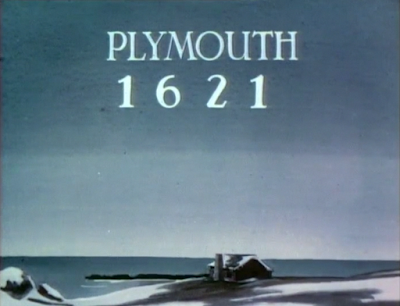










.gif)









































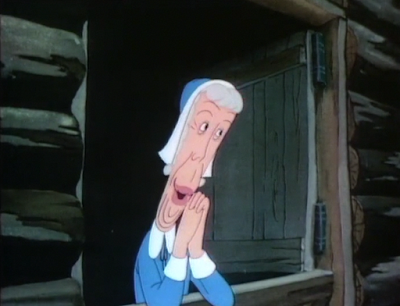























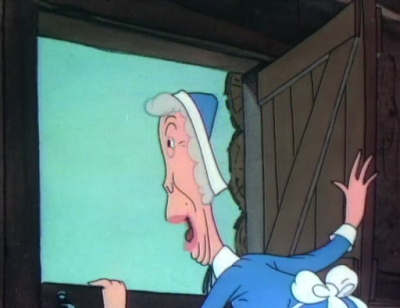



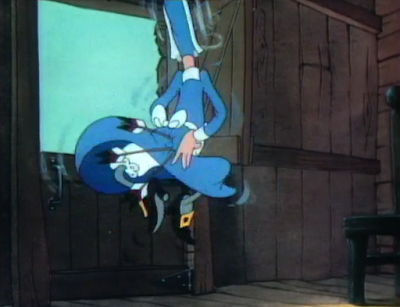

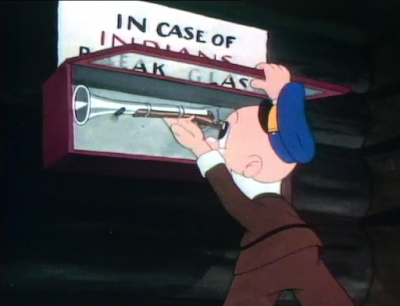






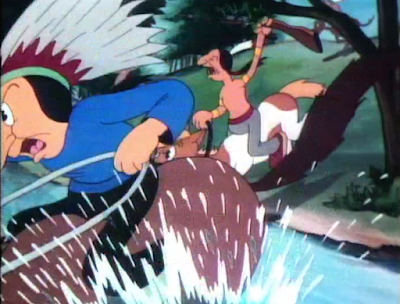


.gif)










.gif)












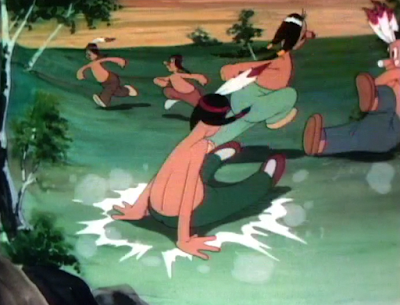




















No comments:
Post a Comment